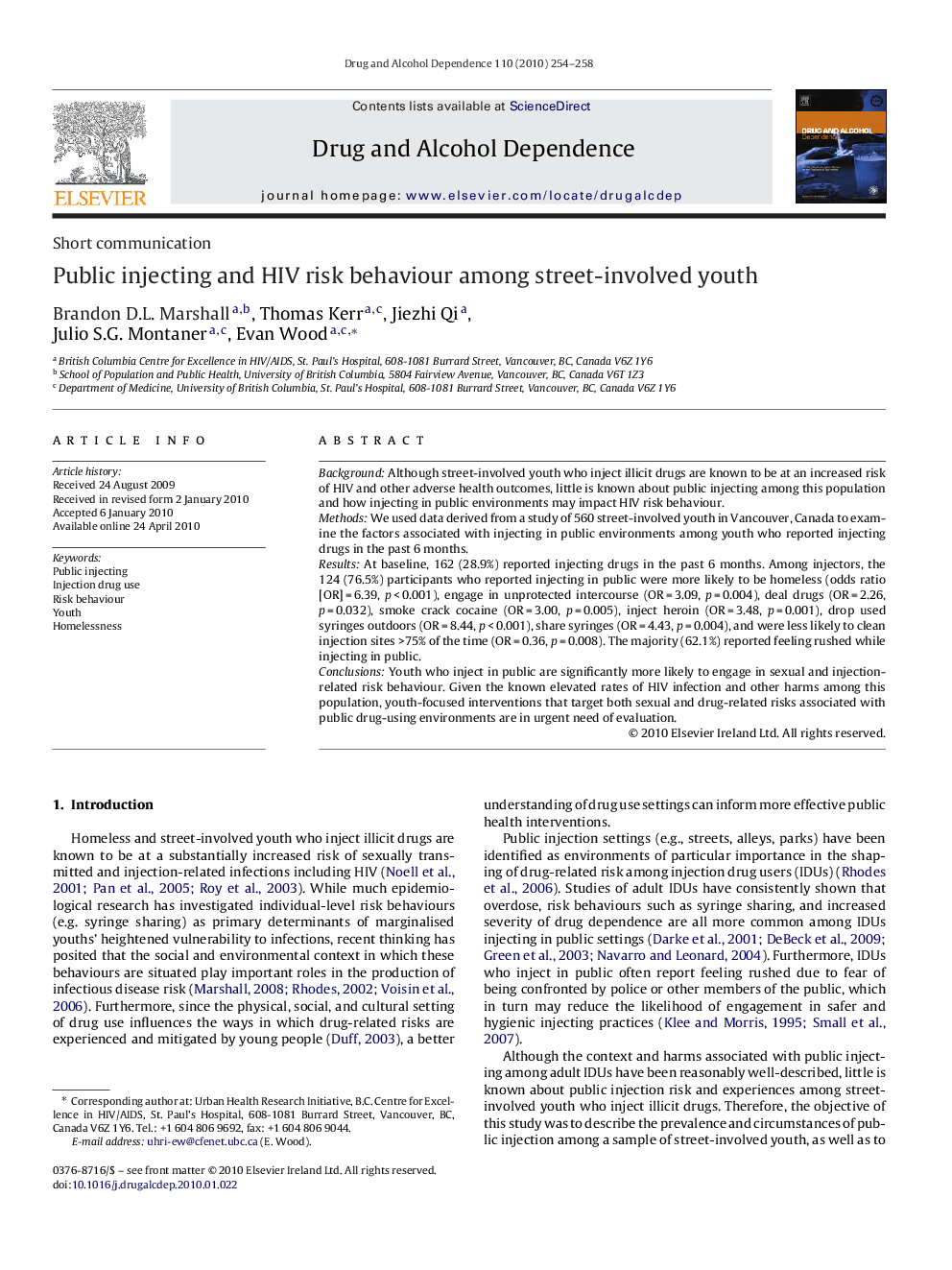| Article ID | Journal | Published Year | Pages | File Type |
|---|---|---|---|---|
| 1070603 | Drug and Alcohol Dependence | 2010 | 5 Pages |
BackgroundAlthough street-involved youth who inject illicit drugs are known to be at an increased risk of HIV and other adverse health outcomes, little is known about public injecting among this population and how injecting in public environments may impact HIV risk behaviour.MethodsWe used data derived from a study of 560 street-involved youth in Vancouver, Canada to examine the factors associated with injecting in public environments among youth who reported injecting drugs in the past 6 months.ResultsAt baseline, 162 (28.9%) reported injecting drugs in the past 6 months. Among injectors, the 124 (76.5%) participants who reported injecting in public were more likely to be homeless (odds ratio [OR] = 6.39, p < 0.001), engage in unprotected intercourse (OR = 3.09, p = 0.004), deal drugs (OR = 2.26, p = 0.032), smoke crack cocaine (OR = 3.00, p = 0.005), inject heroin (OR = 3.48, p = 0.001), drop used syringes outdoors (OR = 8.44, p < 0.001), share syringes (OR = 4.43, p = 0.004), and were less likely to clean injection sites >75% of the time (OR = 0.36, p = 0.008). The majority (62.1%) reported feeling rushed while injecting in public.ConclusionsYouth who inject in public are significantly more likely to engage in sexual and injection-related risk behaviour. Given the known elevated rates of HIV infection and other harms among this population, youth-focused interventions that target both sexual and drug-related risks associated with public drug-using environments are in urgent need of evaluation.
